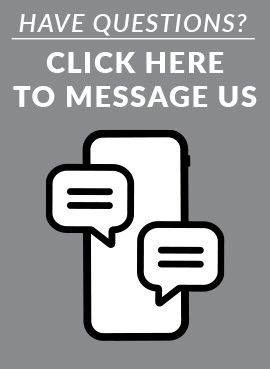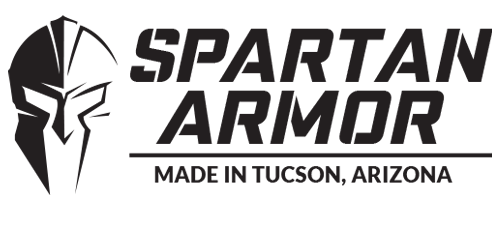Range Bags and What We Should Have in Them
By: Rob Orgel, Emergency Response Tactical
We've all had it happen. You show up to the range with your cool new gun that barely hit the market this week, and as you lay out all your gear to begin shooting and showing your buddies your new toy, you realize you forgot to bring magazines for it.
There is so much mission-specific equipment we need for each range. Let's simplify our range day by having a range bag that covers all of our generic needs. This way we can focus on the mission-specific equipment and not forget our specific magazines or ammunition for the day's range.
Gun Range Bag Basics
First, I love having a range bag specifically designed to be a range bag. This usually comes with custom pouches designed for holding my tools, magazines, eye protection, ear protection, and much more.
My favorite of these is the 5.11 Range bag. They put a lot of thought into its ingenuity and design adaptability. Another great option is the VIKTOS Kadre Ultimate Bag. Spartan Armor Systems® even custom cuts Level IIIA body armor to go inside of it. Of course, you’ll need to select the bag appropriate for your needs.
My bag facilitates all of my needs and almost anything a client could need to tighten down, correct, or just get through the day with the equipment they brought. Your bag may not need to be as robust or could need much more than what we’re displaying here.
Something you won't see in my range bag as it lives in my truck is targets. The Spartan Armor Systems® steel targets offer great feedback and the rewarding “TING”, of smacking a steel target.
Refer to my other article on paper versus steel targets. You will see in this article that both have merit.
Med Kits for the Range
In my personal range bag, you will find three different medical kits.
One is designed for me to carry on my body so it’s rapidly accessible on the firing line, similar to this First Response Kit.
The second kit is my emergency medical kit which is very similar to an individual first aid kit offered by Spartan Armor Systems®. For my personal needs, I have added a few extra tourniquets to the kit.
Lastly, what I call my boo-boo kit. This kit has Band-Aids, tape, tweezers, sunscreen, and bug spray. This is much more of an "owie" kit and much less for an emergency. While this kit gets used much more often than my emergency kit it is not at the top of my back.
All of the items in the boo-boo kit require time to access them. Unlike the emergency kit, which is rarely accessed but if needed will be urgent.
Tools for Your Range Bag
In the tool section, for my clients, I never know what type of weapon and what type of tools will be necessary to adjust, maintain or repair their gear. So I have my primary tools that stay in my range bag as well as a secondary tool kit that stays in my car.
My primary kit in my range bag covers almost all of my and my client's needs. However, if it’s some weird off-size Allen key or hex I can go to my car and retrieve the right items.
Some basic tools I would highly recommend are a flathead, Allen key set, Leatherman, crescent wrench, gun lubrication, and lock-tight.
It’s crazy to think about the number of times I’ve been called upon to be an armorer to find out why a rifle is no longer shooting accurately or how wobble is beginning to take place in a chassis or optic.
Having the right tools to tighten down and re-zero a weapon is a make or break of getting through the day.
The Obvious and Underrated - Water and Snacks
Water and snacks almost seem like something that don’t need to be talked about, however, I place a great deal of importance on these items.
Water in the desert offers its issues. You never know when you’re going to run out of water because your day went longer than you thought. Sustaining your water in an insulated container can help you get through the day.
Next, snacks that are not susceptible to weather. A protein bar that’s covered in chocolate is less than ideal.
Again this may seem obvious, but having a granola bar that has no chocolate or a bag of peanuts can go a long way when your blood sugars are low and you need to have a steady hand.
Obviously, for accuracy's sake, the steady hand is very beneficial but also keep in mind patience is heavily affected by an empty stomach. You don’t want to call it good enough or call it quits on a range day because you got hangry.
 Stay Organized!
Stay Organized!
If you have gear but can’t find it, you don’t have the gear. Expediting your access to your needs is important.
For me, this means selecting a bag that I can write on with a permanent marker. This allows me to label the pouches so that I can quickly find the device I need.
Also sometimes we have a significant other digging through our bag for us. Labeling a pouch rather than describing the pouch saves us lots of time.
In my case, I often have an assistant instructor, before they become experienced they might have trouble finding pieces of equipment inside my range bag. A good labeling system can go a long way for several reasons. The simple concept is, “leave nothing to chance“.
Now that we have the tools in mind to set up our range bag, remember organization is important as well as reorganization, after using a tool return it to its proper place so it can be found again.
Hopefully, these tips increase the time you spend on the range shooting and not digging through your equipment or packing up because you forgot your magazines like we have all done before.
About the Author:
Rob joined the USMC in 2004 with a military occupational specialty of 0311 (Infantry Rifleman). Assigned to 3rd Bn 1st Marines, Rob participated in a deployment to Iraq (OIF-3) as a point man followed by an assignment as Team Leader for the 13th MEU Special Operations Capable to Iraq (OIF-6). In 2007, he joined 1st Marine Regiment and reenlisted to deploy to Afghanistan. InJanuary 2010, Rob was promoted to the rank of Sergeant & continued to serve 1st Marine Regiment for a year-long deployment in Afghanistan. On return from Afghanistan, Rob was assigned to School Of Infantry West to work as a Combat Instructor (CI) for the USMC where he trained thousands of Marines to gain the skills necessary to survive. Rob exited the USMC in 2014 & was immediately picked up by Securing our Country (SOC). As a private military contractor, Rob was responsible for training the specialty teams of operators at the American Embassy in Iraq. Shortly after leaving Contract in 2018, Rob became the Chief Instructor of GPS Defense Sniper School. Rob now gives 100% of his attention to Emergency Response Tactical training all levels over 320 days a year as his passion & full-time job.
You can read his full bio here.



